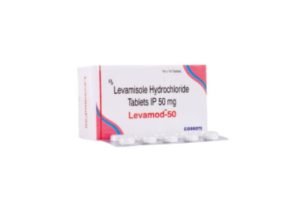
Doxycycline: Full Review
Doxycycline is a broad-spectrum antibiotic from the tetracycline class, widely used to treat a variety of bacterial infections. It is considered more potent and better tolerated than tetracycline and has a similar but broader range of therapeutic uses.
1. Mechanism of Action
Doxycycline works by inhibiting bacterial protein synthesis. It binds to the 30S ribosomal subunit of bacteria, blocking the binding of tRNA to the mRNA-ribosome complex. This prevents the incorporation of amino acids into the growing peptide chain, effectively inhibiting bacterial growth. Like tetracycline, doxycycline is bacteriostatic, meaning it prevents bacteria from multiplying rather than killing them directly.
2. Uses
Doxycycline is effective against a wide range of bacteria, including both Gram-positive and Gram-negative organisms, as well as some atypical bacteria. Common indications include:
- Respiratory tract infections (e.g., pneumonia, bronchitis)
- Acne (both inflammatory and cystic acne)
- Sexually transmitted infections (e.g., chlamydia, gonorrhea, syphilis)
- Rickettsial infections (e.g., Rocky Mountain spotted fever)
- Malaria prophylaxis and treatment (in combination with other drugs)
- Lyme disease (early and late stages)
- Chronic periodontitis
- Urinary tract infections
- Anthrax post-exposure prophylaxis
Doxycycline is also used in the treatment of rosacea, cholera, tularemia, brucellosis, and plague.
3. Dosage and Administration
Doxycycline is available in various formulations, including tablets, capsules, and intravenous preparations.
- Adults: Typically 100 mg once or twice daily, depending on the infection.
- Children over 8 years: Dosing is weight-based (usually 2.2–4.4 mg/kg/day).
- Acne treatment: A low-dose regimen (20–50 mg daily) is commonly prescribed for long-term use.
- Malaria prophylaxis: 100 mg daily, starting 1-2 days before travel and continuing for 4 weeks after returning.
It is usually taken with a full glass of water and with or without food. However, dairy products can interfere with absorption.
4. Contraindications
Doxycycline is contraindicated in:
- Pregnant women: Risk of harm to the fetus, including tooth discoloration and bone development issues.
- Children under 8 years of age: Can cause permanent tooth discoloration and inhibit bone growth.
- Patients with hypersensitivity to tetracyclines.
5. Side Effects
Common side effects of doxycycline include:
- Gastrointestinal issues: Nausea, vomiting, diarrhea, and abdominal pain.
- Photosensitivity: Increased risk of sunburn with sun exposure.
- Esophageal irritation and ulcers: Especially if the drug is taken without enough water.
- Teeth discoloration: More common in young children.
- Superinfections: Such as overgrowth of non-susceptible organisms like yeast (e.g., candidiasis).
- Headaches: Doxycycline can cause intracranial hypertension, leading to headaches and blurred vision.
6. Drug Interactions
- Antacids: Containing calcium, magnesium, or aluminum reduce doxycycline absorption.
- Iron supplements: Can also reduce its absorption.
- Oral contraceptives: Doxycycline may reduce the effectiveness of hormonal birth control.
- Blood thinners (e.g., warfarin): Doxycycline may increase the effect of blood thinners, increasing the risk of bleeding.
- Penicillin: Should not be taken simultaneously, as the two drugs may antagonize each other’s effects.
7. Special Precautions
- Photosensitivity: Patients should be advised to avoid prolonged exposure to sunlight or tanning beds and to use sunscreen.
- Renal and liver impairment: Doxycycline is metabolized by the liver, making it generally safer than tetracycline in patients with kidney disease. However, caution is still required in cases of severe liver disease.
- Hydration: To avoid esophageal irritation and ulcers, patients should drink a full glass of water with each dose and avoid lying down for at least 30 minutes after taking the medication.
8. Resistance
Doxycycline, like other tetracyclines, faces bacterial resistance through mechanisms such as efflux pumps, which expel the drug from bacterial cells, and ribosomal protection proteins. Despite increasing resistance, it remains an effective treatment for many infections, especially those caused by atypical bacteria like Mycoplasma, Chlamydia, and Rickettsia.
9. Storage and Stability
Doxycycline should be stored at room temperature, away from moisture, heat, and light. Like tetracycline, outdated doxycycline should not be used, as it can degrade and potentially cause toxic effects.
10. Summary
Doxycycline is a versatile antibiotic with a broad range of applications, from respiratory infections to acne and malaria prevention. It has a better absorption profile and longer half-life compared to tetracycline, which allows for once- or twice-daily dosing. While effective, doxycycline is associated with side effects such as gastrointestinal discomfort and photosensitivity, so patients need to follow usage guidelines carefully, including staying hydrated and avoiding excessive sun exposure. Doxycycline remains a cornerstone of treatment for bacterial infections, though resistance is a growing concern, as with all antibiotics.







